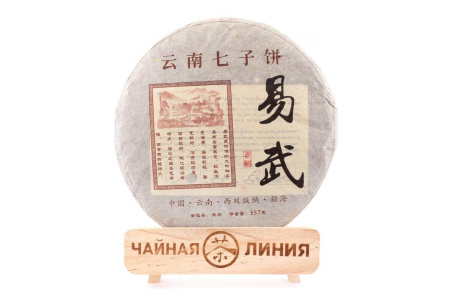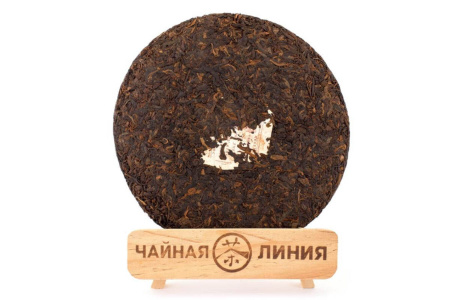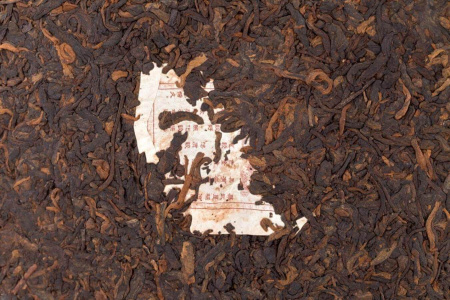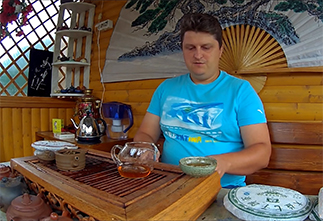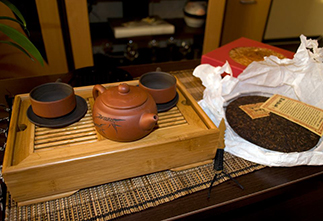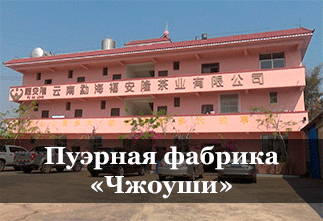-
9 Saturation
-
9 Aftertaste
-
9 Aroma
-
10 Effect
-
9 Balance
-
9 Body
Шу Пуэр 2015 г. «Иу» завода «Чжоуши»: Классика жанра
Шу Пуэр 2015 г. «Иу» от завода «Чжоуши» (кит. 周氏, пиньинь Zhōu shì) – это прекрасный представитель классических шу пуэров, сочетающий в себе глубину вкуса, насыщенный аромат и высокое качество. Чайный завод «Чжоуши» - это уважаемое предприятие в мире китайского чая, которое придерживается традиционных методов производства пуэров, что позволяет сохранить аутентичность и уникальность вкуса их чаев. Продукция Чжоуши часто позиционируется как более доступная по сравнению с некоторыми другими премиальными брендами, что делает ее привлекательной для широкого круга потребителей.
Происхождение и характеристики
- Производитель: Чжоуши – известный китайский чайный завод, специализирующийся на производстве высококачественных пуэров.
- Год прессовки: 2015 год.
- Форма прессовки: Блин (бин ча) – традиционная форма для пуэров.
- Сырье: Для производства этого пуэра использовались листья чайных деревьев, выращенных в определенном регионе, что придает чаю уникальные вкусовые характеристики.
Вкус и аромат
- Аромат: При прогреве дыханием чувствуется выраженный древесно-ореховый аромат с нотками сена и легким оттенком клевера. После заваривания аромат становится более сложным, появляются нотки камфоры и древесины.
- Вкус: Вкус пуэра густой, насыщенный, с преобладанием орехово-древесных нот и оттенком сушеных ягод. Настой имеет темный, коричнево-бордовый цвет.
- Послевкусие: Послевкусие долгое, приятное, с ноткой вареной сгущенки.
Полезные свойства
- Тонизирующий эффект: Пуэр мягко тонизирует организм, повышает энергию и улучшает концентрацию.
- Улучшение пищеварения: Способствует нормализации пищеварения и обмена веществ.
- Антиоксидантные свойства: Защищает клетки организма от вредного воздействия свободных радикалов.
- Успокаивающий эффект: Помогает снять стресс и улучшить настроение.
Как заваривать
- Температура воды: 98-100 °С.
- Количество чая: 7-9 грамм на 150 мл.
- Посуда: Исинский чайник с толстыми стенками или гайвань.
Почему стоит попробовать этот пуэр?
- Классический вкус: Шу Пуэр «Иу» обладает характерным вкусом и ароматом классических шу пуэров.
- Высокое качество: Произведен одним из известных китайских чайных заводов.
- Многогранность вкуса: Вкус пуэра раскрывается постепенно, даря новые оттенки с каждым проливом.
- Универсальность: Подходит как для ежедневного употребления, так и для особых случаев.
В процессе чаепития, чай мягко тонизирует, придает сил и при этом успокаивает нервы, поднимает настроение и способствует общению. Хорошо зарекомендовал себя на роль чая для ежедневного употребления в уютной обстановке в кругу близких друзей, либо для утренних чаепитий, для придания нужного вектора наступившему дню.
Шу Пуэр 2015 г. «Иу» завода «Чжоуши» – это прекрасный выбор для тех, кто ценит классический вкус шу пуэра. Его глубокий, насыщенный вкус и многогранный аромат оставят незабываемые впечатления. Этот пуэр станет отличным дополнением к вашей чайной коллекции и подарит моменты истинного наслаждения.
When warmed by the breath, a woody, nutty aroma is clearly discernible, along with hints of dried bark and dried hay, with a subtle hint of wild clover. Rinsed tea leaves convey the scent of camphor with a velvety woody undertone and the pleasant aroma of sun-warmed haystacks.
The taste of Yiwu shu pu-erh from the Zhoushi factory is thick and viscous. With juicy, nutty, woody notes accented with dried berries, it resembles the taste of high-quality classic shu pu-erh. As the steeping process increases, the infusion becomes watery and simple, with notes of tree bark becoming increasingly dominant.
The aftertaste is rich, restrained, with a hint of boiled condensed milk. The color of the infusion is dark, brownish-burgundy.
This pu-erh tea has been steeped for five even periods, releasing its full flavor and aroma. For brewing, you'll need 7-9 grams of tea per 150 ml thick-walled Yixing clay teapot or gaiwan, along with water at 98-100°C.
When sipped, tea gently invigorates, energizes, and calms the nerves, uplifting the mood, and promoting social interaction. It has proven itself to be a good choice for daily consumption in a cozy setting with close friends, or for morning tea to set the right direction for the day.
|
Country
|
China |
|
Provinces
|
Yunnan (云南) |
|
Region
|
Menghai (勐海) |
|
Manufacturer
|
Чжоуши (周氏) |
|
Raw material production date
|
2008 |
|
Year of pressing
|
2015 |
|
Pressing form
|
Bing Cha (Cake Tea) |
|
Declared weight, g
|
357 |
|
Size
|
20x20x2 |
|
Length, cm
|
20 |
|
Width, cm
|
20 |
- Reviews
- Vkontakte
Pu-erh is one of the most unique types of tea, which only gets better with age. Many people, when they first encounter this tea, wondered: why is pu-erh more often found in pressed form (cakes, bricks, tochas), and not in loose form? The reasons for this are related to both history and the practical aspects of storing and fermenting tea. Despite modern technologies that allow the production of loose pu-erh, the shape of pressed cakes remains unchanged. And pu-erh is more often found on sale in pressed form, for example, in the form of cakes or bricks, and loose pu-erh is less common. We will talk about the reasons for pressing pu-erh into cakes in this article.
Puer is a unique Chinese tea that is distinguished by its depth of taste, complexity of aromas and versatility of aftertaste. Its taste characteristics are formed under the influence of many factors, from growing conditions to the brewing method. Let's look at the main ones.
The question often arises: how to brew puerh correctly? Sometimes the phrase "to get high" is added to it. Moreover, everyone has their own understanding of this phrase. Some mean vigor, and some - intoxication. So how to brew puerh tea correctly? Let's consider several options.
Traveling through the tea mountains, we found ourselves in another land of blue roofs - the village of Zhongcai, which is located in the Menghai district of Yunnan province. According to tradition, we were shown another local tea tree, which, according to the Chinese, is at least a million years old :) The village is very authentic, not designed for tourists, there are many wild pu-erhs there and, of course, we were warmly received. They treated us to local cuisine and tea. We also asked the residents about the prices of tea and how they have changed in recent years.
Well, finally we got to the Zhoushi puer factory, which is located in Menghai, Yunnan Province. We first purchased their cakes remotely several years ago and they were to the taste of Russian tea people. Now it's time to personally meet the owners and expand the range of this brand on the shelves of ChL. In this video, you will see the production process of the already familiar cakes, rare shots of the nuances of packaging and the atmosphere of such places.
The tea ceremony occupies a special place in the centuries-old Eastern tradition. And although the essence of this phenomenon remains constant, the nature and external manifestations of the tea ceremony in different nations have their own national characteristics. In each Chinese province, the tea ceremony and the tea used in it are varied: for example, residents of the southern provinces prefer green tea, and residents of the northern provinces - red tea, in Fujian province they more often use Oolong tea, and in Yunnan province Puer tea is widely known.





